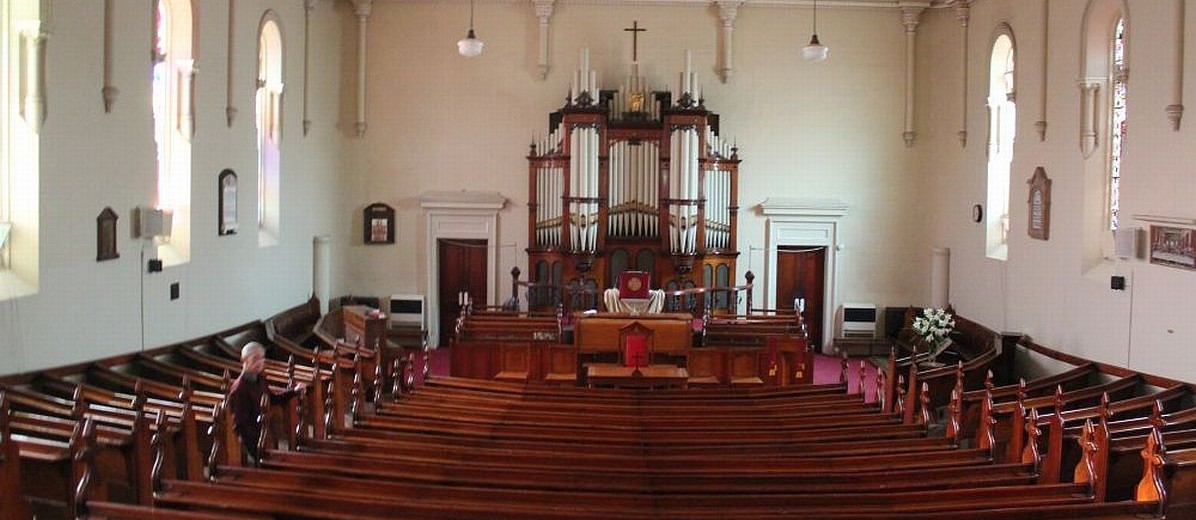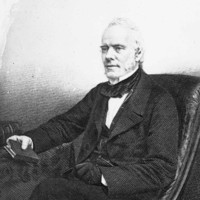Baptists originated among radicals in the English and continental Reformations who held that the true church should be a gathered community of believers, with baptism administered only to those who had made a conscious decision of faith. The interest of English Baptists in South Australia began with George Fife Angas, who encouraged Baptists and other Dissenters to settle in the new colony, and then followed them in 1851. The first Baptist congregation in South Australia was formed in Adelaide in 1838 by English and Scottish migrants. Its most prominent member was David McLaren, second manager of the South Australian Co. The early years were marked by fragmentation over the issue of ‘closed’ (restricted to the baptised) or ‘open’ membership and other doctrinal matters. The founding in 1861 of an open membership city church in Flinders Street, under the ministry of Silas Mead, and the creation in 1863 of the South Australian Baptist Association (later Union) encouraged cooperation among scattered and autonomous churches.
For the next 50 years the Baptists founded churches in metropolitan Adelaide and the northern agricultural districts. Among their members were important commercial figures such as Charles Birks, GS and JR Fowler, Charles Goode, HJ Holden and premiers Thomas Playford and his grandson Tom Playford. Led by Ellen Arnold, a stream of South Australian Baptist women became missionaries in India, where they exercised a religious leadership closed to them at home. From the 1890s South Australian Baptists were more receptive than Baptists in other colonies to new biblical scholarship. The proportion of Baptists in the population peaked at 6% in the 1901 census.
Between the wars the Baptists lost some of their former energy and found it difficult to maintain a distinctive identity. During the 1950s the church entered a new phase of growth, boosted by the foundation of a theological college (later Burleigh College) in 1952 and growing evangelical confidence. Theologically the denomination moved in a more conservative direction, the dominant overseas influence coming from the United States. Many younger ministers adopted models of evangelism and ministry prominent in the Southern Baptist Convention. Since the 1970s the charismatic movement has influenced some congregations. Tension between theological conservatives and moderates peaked in the 1980s with the withdrawal from the Baptist Union of two large suburban churches committed to congregational autonomy and biblical inerrancy. One of these independent churches founded the Adelaide College of Ministries. Since then, several churches have moved in or out of the Union, now called Baptist Churches SA. Aiming at numerical growth and seeking to relate to those outside the Christian church, many Baptist churches have been innovative, introducing new organisational methods and new styles of worship. Their numbers have been augmented by recent migrants from Asia, especially Chinese, Burmese and Filipinos. At the 2011 census Baptists comprised 1.7% of the state’s population but they form a much higher proportion of regular churchgoers. Their strongest churches are in the outer suburbs of Adelaide.
Bollen, JD, Australian Baptists, a religious minority (London: Baptist Historical Society, 1975)
Hill, AC, 100, still thy church extend (Sydney: Australian Baptist Publishing House, 1963)
Hughes, HE, Our first hundred years: The Baptist Church of South Australia (Adelaide: SA Baptist Union, 1937; Adelaide: Archive CD Books Australia, c. 2006)
Manley, Ken R, From Woolloomooloo to ‘Eternity’: A history of Australian Baptists (Milton Keynes UK: Paternoster, 2006)
Walker, John, ‘“The child in the midst”: South Australian Baptist Sunday schools circa 1900–1939’, Journal of the Historical Society of South Australia, 35, 2007, pp50–63
Walker, John S, ‘Christians first and Baptists second? South Australian Baptists and other denominations, 1836 to 1936’ in Interfaces: Baptists and others, eds David Bebbington & Martin Sutherland (Milton Keynes UK: Paternoster, 2013), pp216–41




Add your comment